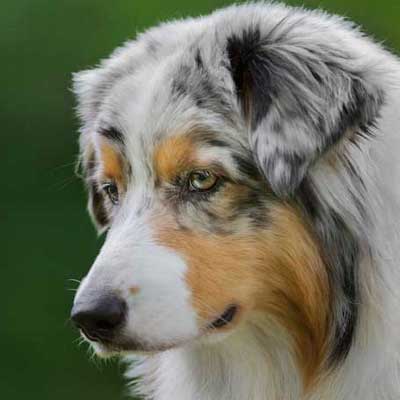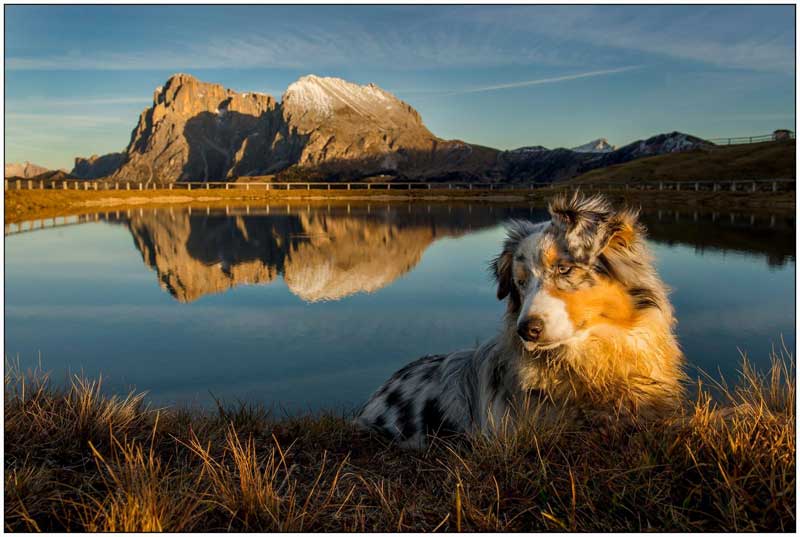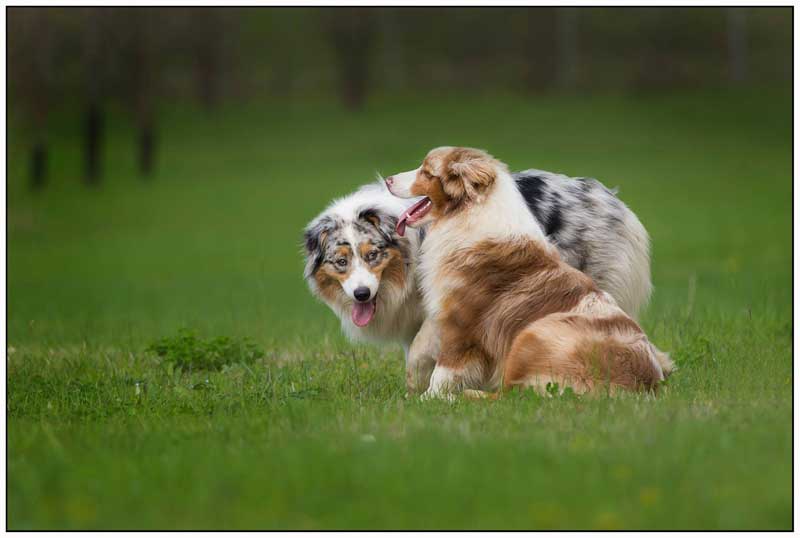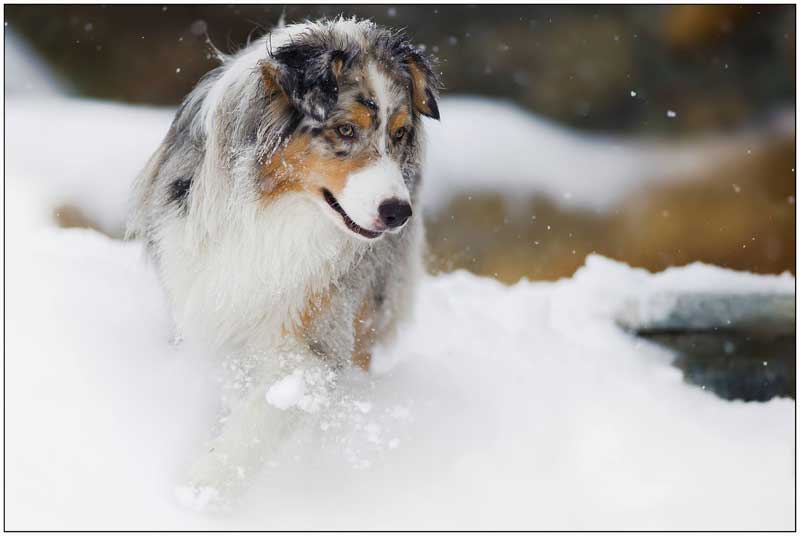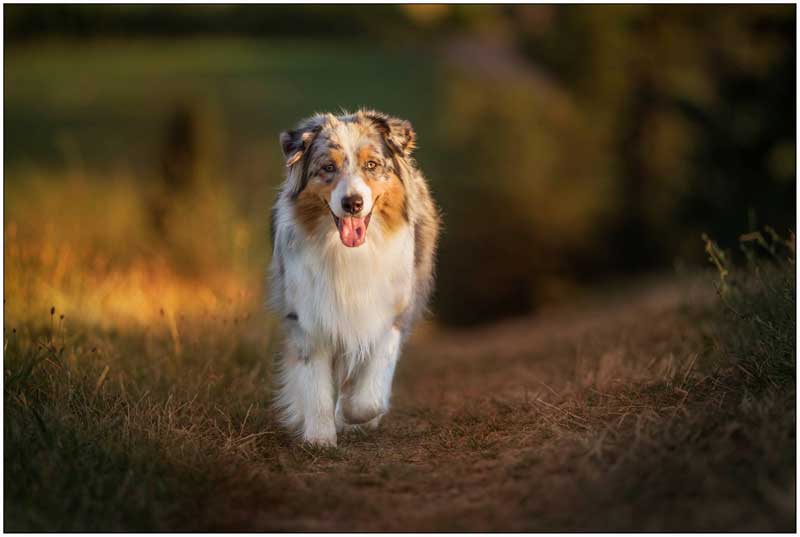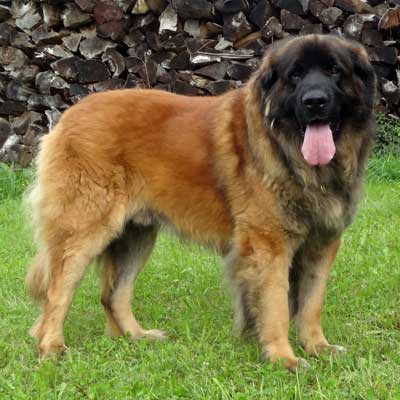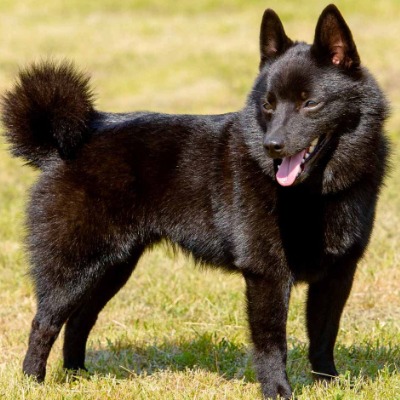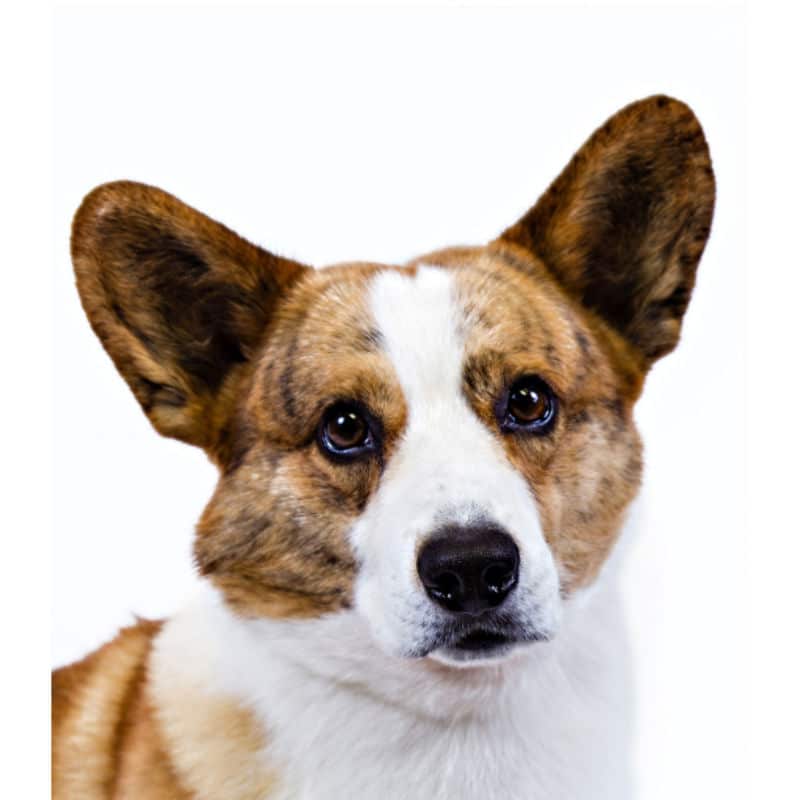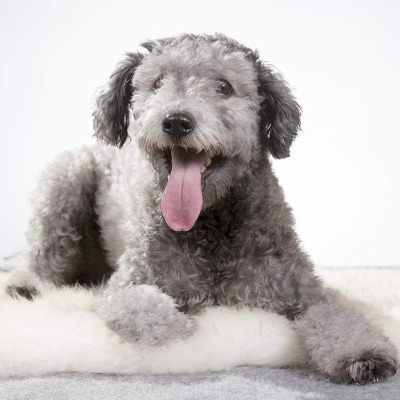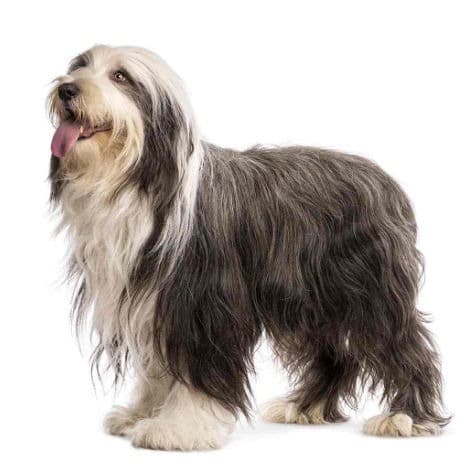Australian Shepherd
Intelligent working dog of strong herding and guarding instincts
While there are many theories as to the origin of the Australian Shepherd, the breed as we know it today developed exclusively in the United States.The Australian Shepherd was given its name because of the association with Basque Sheepherders who came to the United States from Australia in the 1800’s.The Australian Shepherd’s popularity rose steadily with the boom of western horseback riding after World War II, which became known to the general public via rodeos, horse shows, movies, and television shows.Their inherent versatile and trainable personality made them assets to American farms and ranches. The American stockman continued the development of the breed, maintaining its versatility, keen intelligence, strong herding instincts, and eye-catching appearance that originally won their admiration.Although each individual is unique in colour and markings, all Australian Shepherds show an unsurpassed devotion to their families. Their many attributes have guaranteed the Australian Shepherd’s continued popularity.
-
Head
The head is clean cut, strong and dry. Overall size should be
in proportion to the body. -
Head - cranial region
Skull: Top flat to slightly domed. It may show a slight occipital
protuberance. Length and width are equal.
Stop: Moderate, well-defined. -
Head - facial region
Nose: Blue merles and blacks have black pigmentation on the nose (and lips). Red merles and reds have liver (brown) pigmentation on the nose (and lips). On the merles it is permissible to have small pink spots; however, they should not exceed 25 % of the nose on dogs over one year of age, which is a serious fault.
Muzzle: Equal in length or slightly shorter than the back skull.
Viewed from the side the topline of the back skull and muzzle form parallel planes, divided by a moderate, well-defined stop. The muzzle tapers little from base to nose and is rounded at the tip.
Jaws/Teeth: A full complement of strong white teeth should meet in a scissors bite or may meet in a pincer bite.
Eyes: Brown, blue, amber or any variation or combination thereof, including flecks and marbling. Almond shaped, not protruding nor sunken. The blue merles and blacks have black pigmentation on eye rims. The red merles and reds have liver (brown) pigmentation on eye rims. Expression: Showing attentiveness and intelligence, alert and eager. Gaze should be keen but friendly.
Ears: Triangular, of moderate size and leather, set high on the
head. At full attention they break forward and over, or to the side as a rose ear. -
Neck
Strong, of moderate length, slightly arched at the crest,
fitting well into the shoulders. -
Body
Top line: Back straight and strong, level and firm from withers to hip joints.
Croup: Moderately sloping.
Chest: Not broad, but deep with the lowest point reaching the elbow.
Ribs: Well sprung and long, neither barrel chested nor slab-sided.
Underline and belly: Shows a moderate tuck-up. -
Tail
Straight, naturally long or naturally short.
When docked (in countries where this practice is not forbidden), or naturally short, not to exceed 10 cm. -
Forequarters
Shoulder: Shoulder-blades long, flat, fairly close set at the withers and well laid back. The upper arm, which should be relatively the same length as the shoulder-blade, attaches at an approximate right angle to the shoulder line with forelegs dropping straight, perpendicular to the ground.
Legs: Straight and strong. Bone strong, oval rather than round.
Metacarpus (Pastern): Medium length and very slightly sloping.
Front dewclaws may be removed.
Forefeet: Oval, compact, with close-knit, well-arched toes. Pads thick and resilient. -
Hindquarters
General appearance: The width of the hindquarters is equal to the width of the forequarters at the shoulders.
The angulation of the pelvis and upper thigh corresponds to the angulation of the shoulder-blade and upper arm, forming an approximate right angle
Stifle: Clearly defined.
Hock joints: Moderately bent.
Hocks: Short, perpendicular to the ground and parallel to each other when viewed from the rear. No rear dewclaws.
Hind feet: Oval, compact with close-knit, well-arched toes. Pads thick and resilient. -
Gait / Movement
The Australian Shepherd has a smooth, free and easy gait. He
exhibits great agility of movement with a well-balanced, ground covering stride. Fore-and hind legs move straight and parallel with the centre line of the body. As speed increases, the feet (front and rear) converge toward the centre line of gravity of the dog while the back remains firm and level. The Australian Shepherd must be agile and able to change direction or alter gait instantly. -
Coat / Hair
Of medium texture, straight to wavy, weather resistant and of
medium length.
The undercoat varies in quantity with variations in climate. Hair is short and smooth on the head, ears, front of forelegs and below the hocks. Backs of forelegs and breeches are moderately feathered.
There is a moderate mane and frill, more pronounced in dogs than in bitches. -
Coat / Colour
Blue merle, black, red merle, red – all with or without white
markings and/or tan markings, with no order of preference.
The hairline of a white collar does not exceed the point of the withers at the skin.
White is acceptable on the neck (either in part or as a full collar), chest, legs, muzzle underparts, blaze on head and white extension from underpart up to four inches (10 cm), measuring from a horizontal line at the elbow.
White on the head should not predominate, and the eyes must be fully surrounded by colour and pigment. Merles characteristically become darker with increasing age. -
Size
Height at the withers:
The preferred height for males is 20-23 inches
(51-58 cm), females 18-21 inches (46-53 cm).
Quality is not to be sacrificed in favour of size. -
Faults
Any departure from the foregoing points should be
considered a fault and the seriousness with which the fault should be regarded should be in exact proportion to its degree and its effect upon the health and welfare of the dog. -
Severe faults
• Prick ears and hanging ears.
• Non-typical coats. -
Disqualifying faults
• Aggressive or overly shy
• Any dog clearly showing physical of behavioural
abnormalities.
• Undershot. Overshot by more than 1/8 inch. Loss of
contact caused by short center incisors in an otherwise
correct bite shall not be judged undershot. Teeth broken
or missing by accident shall not be penalized.
• White body splashes in all colours, which means white on
body between withers and tail, on sides between elbows and
back of hindquarters.
N.B:
• Male animals should have two apparently normal testicles
fully descended into the scrotum.
• Only functionally and clinically healthy dogs, with breed
typical conformation, should be used for breeding.

